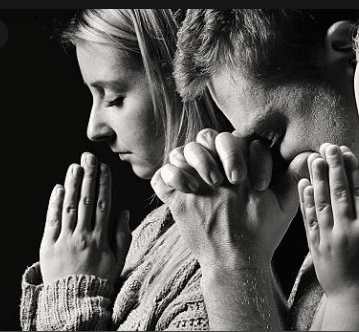In the last article we talked about the importance that Father Kentenich gave to meditation in daily life as a school of love, as a way of finding God in our daily life. However, we know that when we try to change the rhythm of our life to make room for a more contemplative dimension, we find innumerable difficulties when trying to put it into practice.
Deciding to meditate

We must not only seek the Transcendent God who is in heaven and listens to our prayers or rejoices when we participate in the Holy Sacrifice of the Mass and receive communion, but also the God who is the Primary Cause of everything, who has created everything and placed it at our disposal and who desires, through the secondary causes (people and everything created) to communicate with us and show us his infinite love for each one of us.
Never give up when faced with difficulties
Once we have understood the importance of meditation and have decided to put it into practice, we may feel discouraged when we realize the immense challenges that stand in our way and want to prevent us from looking within ourselves to seek God in our life. We might have a few failed attempts at meditation, and then we give up. We believe that meditation is not for us…..
Father Kentenich tells us:
“some people think that meditative prayer is reserved for priests and clerics. The laity, especially simple workers, would not be capable or called to engage in meditative prayer. However, this is a great mistake. Not only are there everyday saints behind convent walls, nor only saints in religious vestments, but also and above all there are saints in secular attire, in the midst of the turmoil and struggles of everyday life. They are present in all vocations and states of life”.
To meditate in a world as hectic as ours is truly a heroic task, and if we do not have an adequate method and persevere in this attitude, relying on the Holy Spirit’s assistance, it will be practically impossible to achieve it. Father Kentenich said that one of the virtues he most admired was loyalty. The loyalty to start again after every fall, after every failure. So, we should not be discouraged if we do not succeed in putting meditation into practice immediately. We must always have the courage to try again.
Ask the Holy Spirit for help

That is why we need to implore grace from above, especially the gifts of the Holy Spirit. We can ask for the powerful intercession of our holy guardian angel. He is a very powerful being who has been given to us by God to guard, enlighten and lead us to heaven. He knows the importance of having an intimate contact with God in order to reach Him, so he wants to help us implement the practice of meditation.
As Father Rafael Fernandez teaches: “The proper objective of meditation is to deepen and make our relationship of love with God more intimate. If we meditate on an idea, it is to savor the truth or the reality it represents, so that, over and beyond our understanding, it may penetrate our heart. For when it is a question of our bond of love with God, and of the love He has for us and which He expects us to bestow on Him, concepts or mere ideas are not enough.”
And he continues:
“Meditation is like the root of the tree. What sustains the trees, when storms and tempests arrive, is not the branches or the leaves, but its roots. The deeper the roots of a tree, the greater its ability to weather the storms. Even the storms strengthen them because their roots are deep. The wind may tear off some branches and leaves, but the tree remains standing. But when the roots are few, even if the tree has very lush foliage and a large trunk, it will easily be blown down by a storm. Meditation will root us in the heart of God,” he concludes.
How to meditate?
The practice of daily life meditation taught by Father Kentenich has some stages. The first stage is preparation. There is distant preparation, nearby preparation, and immediate preparation. Then the progression of the meditation takes place, with the beginning, the development, and the conclusion.
In future articles, we will explain each of these stages in detail including practical meditation exercises.
Here is an overview, a summary of how meditation works:
Choose a time of the day to perform meditation. Initially it can last 10 to 15 minutes. We can start by doing it once a week, and then gradually increase the frequency.
Choose a suitable place where you will not be interrupted. Preferably you should have a cross or an image that reminds you of the supernatural reality. We close our eyes, breathe calmly, and place ourselves in the presence of God, then say a prayer imploring the illumination of the Holy Spirit.
Then, we choose what we are going to meditate on. If we are still beginners in this practice, it is easier to choose a passage from the Bible or a prayer. Later, with practice, we can choose a life event (a concrete situation in our life) which is actually the meditation of daily life as proposed by Father Kentenich.
Three key questions
Father Kentenich suggests three questions that are an excellent tool for developing this encounter with the Lord:
1. What does God want to tell me with this? (by means of this text or this event or circumstance).
2. What do I say to myself?
3. What do I answer to God?
The most important question is the last one. This is where we enter into meditative prayer. When we speak of a response, it does not necessarily mean an action or a resolution, but a response of love, a response from the heart, speaking personally to the Lord. We express our love through gratitude, repentance, and petitions. We end the meditation with a prayer of thanksgiving. It is convenient to write down in a personal notebook what we have meditated and what was most important to us in the meditation.
Besides thanking the Lord and Our Lady for the meditation (or asking for forgiveness if we have not done it well), sometimes we can conclude with some intention or purpose that is in line with what we meditated. Thus, gradually, dedicating a few moments a day to meditation, we will increase our love and our connection to our Heavenly Father who loves us with infinite love.
Related posts
April 18, 2024
Covenant of Love Day: Becoming Prophetic, Like Mary
Dear Schoenstatt Family all over the world, Greetings on the celebration of the Covenant of Love Day. We remember with gratitude and joy…
March 19, 2024
Saint Joseph: Radical service leadership
When we talk about leadership, we tend to bring to mind the image of people of great public or private reputation, with decision-making…
March 18, 2024
Mary’s best ally
As every 18th of the month, we are celebrating a new day when we come together throughout the world to renew our Covenant of Love. This…




